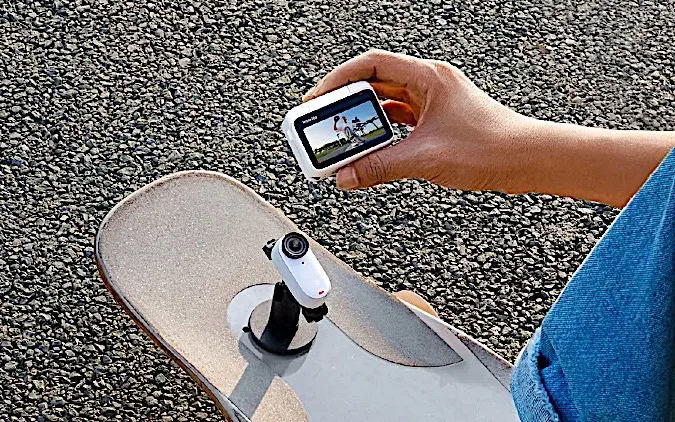The Morning After: TikTok is killing off its BeReal clone
TikTok says it's discontinuing TikTok Now, its attempt to replicate last year's social media sensation BeReal. According to screenshots posted by several users, parent ByteDance is “updating the TikTok experience and discontinuing TikTok Now.” TikTok Now had a nearly identical approach to viral hit BeReal, requiring users to take front and rear photos simultaneously. It added the ability to take 10-second TikTok-like videos instead of photos, obviously making it completely different. Snapchat and Instagram have both attempted to copy (or tested) their own BeReal-ish features.
The feature was part of the main TikTok app in the US, but is also available as a standalone TikTok Now app in other regions. The message sent to TikTok users in the US indicated that the feature was being killed in the main app, but there's no word on the separate TikTok Now app.
BeReal, meanwhile, might be contending with a drop-off in interest, according to a report from The New York Times in April. BeReal refuted an analytics report behind the story, though, saying it still had 20 million daily active users.
– Mat Smith
The Morning After isn’t just a newsletter – it’s also a daily podcast. Get our daily audio briefings, Monday through Friday, by subscribing right here.
The biggest stories you might have missed
Lordstown Motors sues Foxconn and declares bankruptcy
Apple has posted the entire first episode of ‘Silo’ on Twitter
Brave Pixel Fold owners can try to repair hardware issues with iFixit's help
The best PC games for 2023
The best password managers for 2023
The best Amazon Prime Day early access deals for 2023
A guide to the best way to connect your home.
A lot of domestic WiFi setups suck for countless reasons. Maybe the hardware your ISP gave you isn’t great, or your walls aren’t friendly to wireless signals. Perhaps the signals from your all-in-one wireless modem and router can’t reach everywhere from its spot in a far corner of your house. It’s these problems that mesh WiFi systems are designed to tackle, with a set of smaller WiFi nodes that are spread around your home, pushing internet into every corner. But which one to pick? And do you really have to spend a fortune? We can answer both of those questions in our new buying guide.
Continue reading.
The Insta360 Go 3 is basically a GoPro with a flip screen.

Insta360
The new Insta360 Go 3 has a larger, more rectangular “Action Pod” detachable body, making it look more like a conventional action cam than its predecessor. The Action Pod body also doubles as a 2.2-inch flip touchscreen. The Go 3's camera itself has some significant upgrades as well. Video resolution has been bumped up from 1440p to 2.7k (2,720 x 1,536), meaning you'll get more out of Insta360's renowned “FlowState” video stabilization trick, while a second microphone has also been added to improve audio. The Insta360 Go 3 is now available via the official online store or Amazon, with prices starting at $379.99 for the 32GB model.
Continue reading.
The Moray is meant for comfort as much as quality.
In-ear monitors (IEMs) are normally aimed at musicians and audio engineers, but Razer reckons it can tap into the disposable income of gamers and streamers with its first in-ear monitor, the Moray. At $130, it's not meant to compete with higher-end IEMs from the likes of Audio Technica, Sennheiser or Shure, but Razer has paid attention to comfort: the ergonomic design and braided cables are meant to stay snugly in place for hours and it comes with three different ear tip varieties (each with three different sizes) to optimize fit.
Continue reading.
It's another win for the NACS.
Tesla’s North American Charging Standard (NACS) is one step closer to becoming the de-facto electric vehicle charging system in the US. On Tuesday, the Society of Automotive Engineers (SAE) International, one of the automotive industry’s most important standards bodies, shared it is working to support the plug, a move that will make it easier for manufacturers to add NACS connectors to their vehicles and charging stations.
“Standardizing the NACS connector will provide certainty, expanded choice, reliability and convenience to manufacturers and suppliers and, most of all, increase access to charging for consumers,” the SAE said in a statement. In the last month alone, Ford, General Motors and Rivian announced they plan to adopt NACS.
Continue reading.
The app, IRL, is shutting down.
SoftBank, major tech investor and Japanese phone carrier, led a little-known social media app called IRL to unicorn status and an overall valuation of $1.17 billion by investing over $170 million. It turned out that the app completely made up its user numbers, admitting that 95 percent of its purported 20 million user base was fake. Employees became suspicious of the company’s claim of 20 million monthly active users. Eventually, the SEC stepped in, issuing a probe as to whether or not IRL misled investors. In April of this year, the company’s board of directors suspended CEO Abraham Shafi and appointed a new acting CEO. Due to those incredibly inflated numbers (and half-baked concept), IRL is shutting down and taking its 19 million bots with it. The company says it’s returning capital to shareholders, but nobody knows how much money is left in the coffers.
Continue reading.

